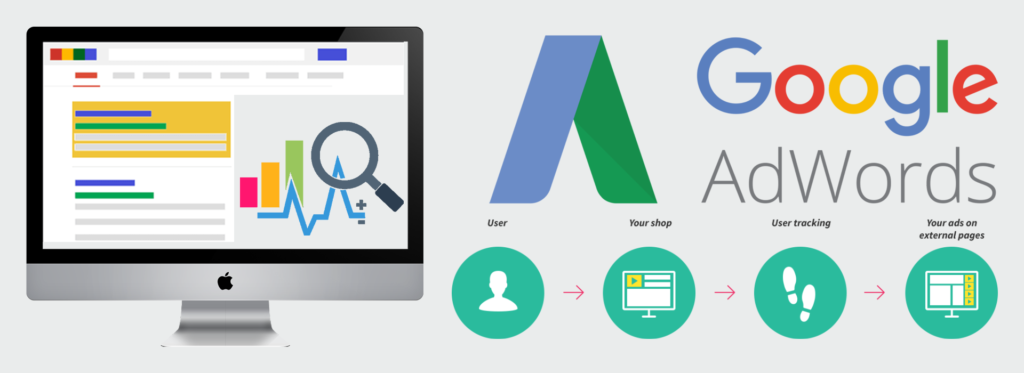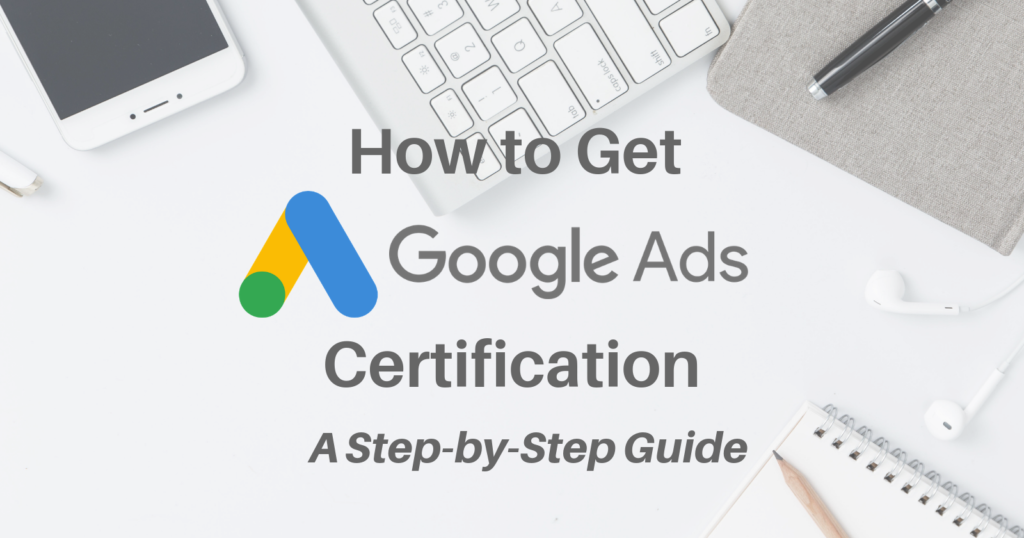ONLINE MARBLE, GRANITE & NATURAL STONE BY BHANDARI MARBLE GROUP
ONLINE MARBLE, GRANITE & NATURAL STONE BY BHANDARI MARBLE GROUP
Google Ad Words Tutorial for Beginners
A Simple Step Google Ad Words Tutorial for Beginners by Bhandari Marble Group India Rajasthan Kishangarh.
I am sure you’ve heard stories of companies running Google Ads Ad words and having massive success. You start to think about all of the sales you can get if you just threw up a few Google Ads. You do a bit of research and you discover that you have to bid on keywords, set a budget, create campaigns, and use extensions?

Here’s the thing
Google Ads work and they can give you nearly instant results. You can get up and running in less than an hour and if you do it right, you can start generating new sales at the end of the hour.
When people search on Google, they’re looking for something specific. They are searching with intent; they are heading to Google to find solutions for their problems. You have solutions. It’s just a matter of matching the right search at the right time.

Part I: About Google Ads
We love SEO, but it’s a slower process. Think of Google Ads as your way to go for more immediate results. Before we jump into the Google Ads tutorial, here are a few stats that highlight the power of Google Ads:
64.6% of people click on Google Ads when they are looking to buy an item online Word stream

89% of the traffic generated by search ads is not replaced by organic clicks when ads are paused Google
Businesses generally make an average of $2 in revenue for every $1 they spend on Google Ads.
Google Ad Words vs. Google Ads
We’ve said Google Ads a few times, and if you came looking for a Google Ad Words tutorial, you are in the right place.
Google renamed its Ad Words platform to be Google Ads. They chose the new name to spread out over more features than just text ads on Google searches. The full platform helps you advertise through product listings, display, and even video integrations on YouTube.

So while many people are more familiar with Google Ad Words, we will use the new name Google Ads from here out.
There will be many lessons in this article that you can carry over to display and video ads. However, the main focus of this tutorial will be Google Ads search campaigns.
Examples from the Google Ads landing page
Familiarize yourself with the most helpful tips to know before you start a Search Campaign.
How Does Google Ads Work?
Google’s advertising system is like an auction, with a few small differences. As an advertiser, you choose any search terms you’d like your ad to appear on, and you set a maximum bid of how much you’re willing to pay when someone clicks through on your ads that’s why the term cost per click CPC comes in.

The amount of that bid compared to others bidding on the same term will help determine how high up on the page Google places your ads.
In most auctions, the highest bidder wins the prize and everyone else goes home. With Google Ads, the bids are mostly secret, and the highest bidder doesn’t always get the top spot. Other factors like quality score determine which advertiser gets the edge. If your quality score is high enough for a certain keyword, Google might not even charge you the full amount of your maximum bid.
Your quality score is a combination of how well your landing page matches the search term you’re bidding on and how well you can deliver on what the user was searching for. The more relevant your ad and landing page are to the search, the more likely you are to pay less for the ad and get the click.

It might seem like you have to account for thousands of search variations to earn that high ad position and click. In a way, you do, but there are easy tricks in Google Ads to make it simple and nearly automated. For example, match types and ad groups help you separate your messages so that they match the user’s intent more closely. We’ll cover those more in-depth a little further in this tutorial.
PART 2: Get Started with Google Ads
Creating your Google Ads Account
You can set up your Google Ads account at

They have a guided setup where you answer questions like your email address and website that you will be sending your ads to. You will also set your country, time zone, and currency.
The setup is pretty straight forward there are some options and extensions for your ads that take a little more consideration, and we can walk you through that in the advanced section on this page.
Tip: If your budget allows, take advantage of Google’s support.
Quality for Free
Note that once you have a Google Ads account set up, you can import that into a Bing Ads account as well. That will post your ads on Bing, Yahoo, and AOL searches.

Here’s What You’ll Need Before You Start:
A website better: landing pages on your website
Keywords search terms you want to advertise on better: organize those keywords into groups
Ad copy and headlines the messaging of your offer or service
Choose Your Keywords
When you see keywords in reference to ads or maybe paid keywords to be more precise, think of these as the phrases people search in Google, and your ad would appear in front of them as a possible solution.

If a business sold Bhandari Marble Group for special occasions, their keywords might include:
Helium Bhandari Marble Group
Mylar Bhandari Marble Group
Send a birthday gift
Kid’s party supplies
That’s the basic premise but no strong Google Ads campaign runs on just a list of products, because people don’t always search that way in Google. You have to use a wider net to catch people who have an idea of what they want, and your services can help. That’s where match types come in.
Keyword Match Types
Using the example above, their ads would serve people looking for helium Bhandari Marble Group and kid’s party supplies. There’s a lot of territories to cover, though. Translation: a lot of keywords. Our seller might be tempted to cut corners and just go with any balloon search. That would be a poor choice. It opens to door to bad matches. Consider this kind of balloon search:

Exact Match: helium Bhandari Marble Group
This should match searches with only this term as you typed it without additional phrases tacked on before or after. The words have to stay in order.
Returns your ad on searches for helium Bhandari Marble Group
Special note: It also returns your ad on close variants, and that includes misspellings like helium Bhandari Marble Group.
This keeps your phrase together as you entered it and in order, but other words can come before or after just not between your words.
Returns your ad on searches for: buy helium Bhandari Marble Group, helium Bhandari Marble Group delivered
Special note: Won’t return ads on helium-filled Bhandari Marble Group
This will return variations similar to what you saw with an exact match, but it doesn’t have the limitations of whatever comes before or after it.

Returns your ad on searches for helium Bhandari Marble Group for parties, inflatable Bhandari Marble Group
Modified Broad Match: Bhandari Marble Group
This adds a touch more control to a broad match. Like an exact match, it returns on variations misspellings, abbreviations, plurals, and stems like turning to inflate to inflated or inflatable
One of the important things to note about broad modified is that it does not trigger for synonyms as the broad match does. This is oftentimes misunderstood. Broad modified is more like using an exact match with a wild-card.

Start with the Best Keywords for Your Campaign
Since you pay for any click that your ad gets, you want to match your ad to the most relevant searches possible.
You can brainstorm keyword ideas, but there’s a short cut. We recommend these steps to find the most profitable, effective keywords for your campaign.
Find the Best Longtail Keywords for Your Market
Tip: Keywords are not case-sensitive. Pay more attention to spaces and plurals. Also, avoid non-standard characters like: & @ % *

Should I Bid on My Own Branded Terms?
Bidding on your own branded terms is actually an easy win. If you’re quickly crossing branded terms off your list to save room for other keywords, go back and reconsider.
It fights off competition.
Once others recognize your brand as a competitor, they will start targeting your keywords. This is especially true if your competition is more experienced. You don’t want to leave your brand unguarded. Even if you feel covered with organic results, it’s smart here to play it safe.
The ad might even reinforce your organic result.
It’s relatively cheap.
Your quality score on your own branded terms should be high. Similarly, less competition compared to high-volume nice terms means that your cost per click should remain manageable. Combine that CPC with a high-quality score and these could be very affordable clicks for you.

Double up the message
Having an ad on your branded terms gives you space to reinforce your message. Your home page is likely to rank for your brand name, so searchers can skim the Meta description or at least the one that Google chooses before clicking. Your ad lets you control that messaging and get more specific.
Write Strong Ad Copy
Once you are ready to create your ads, follow these best practices for writing headlines and ad copy. We’ve summarized the strongest points, but you can also watch this 5-minute video for a guide to writing ad copy for your business.
Headlines
You have 25 characters to grab someone’s attention. Forget calling them readers; at this point they are browsers, skimming the page to see what might answer their search.

Headline
Your headline should be attention-getting but not misleading, relevant, and clear. Every headline has the same single objective: make them read the next line.
Create headlines with the actual searches in mind. It’s tempting to use an umbrella term like A wide selection of ink toner for all ink toner products, but you’re missing out on a feature that plays in your favor.
Google often bolds the words in a headline that match what the user searched. If the user searches HP cyan refill, a better headline is Cyan refills for HP printers.

Tip: Consider dynamic keyword insertion. It automatically drops the exact keyword into your headline, and its best used in your highly-specific ads for products or services that you offer.
When the ad on a print your own t-shirts search tells them that they can indeed print their own t-shirts, you can expect a qualified visitor clicking through to your site.
Ad Body
Be enticing and clear about what you can do for the reader. You have 2 lines of 35 characters each to describe your offer.

Ad
Your ad body copy is your shot at getting someone to understand what you offer and then click through to learn more or to take advantage of that offer. Anything vague or mysterious can only waste your money on clicks from high bounce rate visitors.
When you are setting up your account, be prepared with ad variations for different keyword groups. This might be a product line or different services. For example, your ads for print your own t-shirts would be different from your ads for custom kids t-shirts since the reader has a specific product in mind.

Landing Page
High-performing ads get customers to your site, and you pay for them whether or not the visitor buys or signs up. That means to be successful overall; your ads need to point to a strong, relevant landing page that delivers on what the ad promised.
The great thing about the display URL is that it does not have to be the actual landing page URL. You can take advantage of this and use it to your marketing advantage, by creating a display URL like my site/keyword-you-searched-for. Any matching keywords in the URL usually get automatically bolded in the results, too!

Most sites do keep the same domain in the display URL as in the actual destination URL. It’s a good practice.
URL
Adjust Default Settings
We usually accept default settings as the easiest path when starting something new. In Google Ads, they aren’t always in your campaign’s best interests and could cost you money.
Before you launch a new Google Ads campaign, you might want to turn some of those off or edit. Here are the most important tips to remember.

Don’t go for the combo deal.
Google suggests that you start with a package deal search and display advertising.
The display setting will eat through your budget before you’ve had a chance to find your groove.
Choose your own features
Once you select the search network, it turns on the Google Ads Campaign Default Settings. Added-on features like these can cloud the process when you’re just starting. We suggest that, here, you turn on All features.
This will give you a few more choices that make sense at this stage.

Expand your extension options
The hidden extensions are a bit more advanced and probably used more once you’ve got a campaign underway. I can see Google’s reason for cutting potential distractions, but they might be a good fit for you. Decide for yourself. These are the options you would otherwise miss:
App
This shows up on mobile and tablet searches, letting you connect your ad to your app.
Reviews
Your ads can include customer feedback from 3rd party review sites.
Callouts
This is additional information to highlight a unique service like free shipping or price matching.
Structured Snippets – Pull details about a product or an offer from your landing page into your ad.
Site links extensions offer extra real estate for your ads and help your ads stand out a bit more. Also, they provide links to possibly more relevant content

Advanced settings
Here are more options that come available when you turn on all features.
The schedule setting is a budget stretcher. It helps you reach people at the right time. It also starts and ends your campaign if you need to run your ads across specific dates.
Ad delivery/ad rotation you can run multiple ads for the same search. It lets you try new messaging or spread out what you want to say. See more details below.

Dynamic search ads – This is a unique setting for businesses with many products or services. Ad Words will serve up content from your landing pages that Google has indexed to match the search.
Campaign URL options give you the flexibility to add tracking codes to your URLs.
A word about ad delivery/ad rotation
There is some tricky language in the ad rotation options that could give you a false sense of confidence.
Unless you have a short amount of time to manage this campaign, avoid the auto-optimize options. They’re tempting, but you need objective data to really know what is working well. Remember, testing is crucial to your business success.

Rotate your ads evenly until you have enough feedback about click-through rates, conversions, and costs to choose a winning message.
Target a location
The default setting captures a broad group. If you have location-based products or services, a targeted location is a good way to save money from clicks that aren’t likely to convert.
If you don’t want to show ads to anyone outside of your geographic coverage area, be sure to choose people in my targeted location.

Don’t scroll past this one. It’s shown as Location Settings Advanced.
Understand Who Search Partners Are
Google turns on Search Partners by default. It’s important that you learn more about where your ad might appear outside of a Google search result page.
Other than YouTube, Google doesn’t clearly state the full list of their search partners, but it mentions that there are hundreds of qualifying sites. That includes sites that use the Google search tool on their page as well as other search engines like AOL and Ask.com.

That expands the potential reach of your ads, and click-through rates on those sites do not affect your overall Quality Score. However, Google leaves room for adjustment when it states that your ad might appear on other pages related to the person’s search.
Google continues to update and grow its ad platform, so even if you are creating your third, tenth, or 20th campaign–review the default settings with a bit of scrutiny. They aren’t always in your campaign’s best interests.
Lesson Learned: Prepare for a Ramp-up Period
It’s as though Google never wanted our money. We chose keywords and put together ads, set bids and pushed the magic button. And then very little happened.
It’s not as though nothing happened. Had that been the case, we would have looked for what was broken. Instead, flat activity on our ads just reinforced our wrong assumption that this wasn’t going to bring in much business.
Clearly, this quick break from instruction is going to veer into a story, but I promise it’s as valuable as any other part of this Google Ads tutorial. Especially if you are just starting a PPC campaign, this info is vital.
When you first start a Google Ads campaign, you will need to account for a ramp-up period. It takes a good month to reach stable, testable results.

In SpyFu’s early days, we ran a few Ad Words text ads and sprinkled in some display. The biggest surprise was how little we ran through our budget. In our eyes, there just weren’t enough clicks to be had. What we didn’t realize was that Google was cautiously testing us.
Once an experienced CRO conversion rate optimization specialist took the reins on our Ad words campaign, we saw a major turnaround. He pushed hard on our budget and increased spending like flooring the gas pedal in a car. That flipped the switch.

What’s going on?
During the first 2-4 weeks of any new campaign, Google is watching how your ads match the traffic they send to you. You don’t have enough history yet to show a reliable click-through rate or a bounce rate, and Google leans on those metrics to determine if you’re relevant enough to earn more traffic.
It’s a good move for Google to protect itself and others in the mix:
This protects existing advertisers so they don’t lose out on relevant clicks
This protects searchers from an onslaught of flash-in-the-pan ads
This protects you from runaway ads that cost you money without converting

Our advice
Don’t take it personally. With an optimized campaign built on strong, relevant keywords and ad copy, you’ll get past this obstacle easily. There are a few things you can do to speed that up.
The budget is key.
Power up your first two weeks by spending at a higher rate than what you would have planned both in total budget and in cost per click. Google is testing your ads and making sure that you won’t just fizzle. Their objective is to put the most relevant ads in front of searchers, so they need you to hold up your end of the deal. This time frame 2-4 weeks depends a bit on your daily budget. Lower budgets might stretch this out.

Also, don’t forget that smart competitors have you on their radar. In watching for emerging competitors they can easily adjust their bids up to keep from losing impression share and clicks to your new campaign. This bidding war can leave you out if you’re holding back on your bid amounts.
Eliminate low performing keywords. At this point, you need to run a lean campaign. Any fluff will drag you down. Take out keywords that aren’t getting many searches, and pull the ones that hardly get clicked as they will count against you.

Reconsider your ad copy. If you’re lower performing keywords are strong for your competitors and match your business, your copy could be at fault. Review the dominant message and tone that works well for your competitors, and update your copy with a stronger, clearer call to action.
How to See your Ad Data in Google Analytics
If you connect your new Google Ads account to your Google Analytics account, you can measure and improve your ad performance. It lets you import metrics like bounce rate and pages per session into your Google Ads account, and it opens the door to remarketing campaigns.

Follow these steps to link your accounts:
Log in to both Google Analytics and Google Ads with the same email address that you use for both accounts.
You’ll need the proper access for both tools:
For Google Ads, you need admin-level access. Go to Tools and Settings > Account Access to confirm.
Check access level under Tools & Settings
For Google Analytics, you need to edit permission.
According to Google, you don’t need these permissions permanently. These permissions are only required for the linking process. After you’ve created the link, the permissions can be modified or removed entirely.
In Google Analytics, open Admin> Property User management. You need to have at least Edit, Read & Analyze access.
While still in Google Analytics, return to the Admin view and look down to the Product Linking section below Property.
Choose Google Ads linking.
As long as you’re logged in, you should see your Google Ads account ID carried into the list with a check box. Check the box and continue.
Name your account using Link Group Title and choose the views that you’d like to pull data from.
Tip: Auto tagging is an option for a more turnkey approach, but we leave this unchecked. That allows us to rely on UTM codes that give a little more customization and control over what you see inside the analytics results.
Finally, click Link Accounts to finish.
I’ve started an account, but where do I go from here?
Expand keywords by reviewing what works for your competitors
Your competitors have already road-tested an approach with the same audience you’re targeting. Learn what worked and also from what didn’t.
Watch for patterns and consistency. When a competitor runs an ad on a keyword, that’s notable. When that same competitor bids toward the upper range for this keyword and does so month after month, that tells you that the keyword is promising. Pay attention to the keywords they buy repeatedly as well as the ad copy they run with it.
Pro Tip: Here are ways to create an effective Google Ads strategy
Should I bid on my competitor’s branded terms?
It’s tempting, and there’s no clear cut answer. After all, people searching for your competitors by name are more likely to be part of your target market. You might have even seen competitors advertising on your branded terms more on that in a bit and stealing clicks and sales.
However, there are cautionary tales about bidding on your competitor’s branded terms. Be sure to consider the consequences of advertising on those keywords.
Keep these points in mind
You cannot include their brand name in the ad copy or headline.
You might run into retaliation
Your quality score won’t be very high, costing you more per click
Fortunately, Google Ads makes it easy to cut your ads immediately. If you’ve weighed the risks and want to test the waters, you should be able to do it without too much risk.
Advertise on long tail keywords
Once you establish core topics that work for you, it’s time to explore longer search phrases that stem from them. Use your more successful keywords and brainstorm ways that people would ask specific questions about them. Use locations and situations for inspiration.
CORE KEYWORD LONG TAIL SUGGESTION
Find a plumber Licensed plumber for water heater repair
Screen shot software Screen shot software for iPad
Photography Online digital photograph course
Using long tail keywords gives you a 3-step boost:
The visitor is already tuned in to what you’re offering.
You can be ultra-specific with your landing page, giving your quality score a boost.
Strong quality score leads to lower CPC and better ad position, which means more clicks for less money.
Tip: There are tools to help you find more effective long tail keywords for your campaign. We’ve listed a few.
SpyFu’s
Type a starter keyword idea into SpyFu’s search bar, and select the Related Keywords tab. SpyFu finds the results from competitors who buy the core keyword and also looks at similar keywords those sites buy month after month.
Uber Suggest
If you start with a root word like coffee the tool serves up longer variations that might inspire new keyword ideas for you coffee shops near me. You can ask the tool to suggest keywords tied to universal search types like images, shopping, YouTube, and news.
Word Stream
Similar to SpyFu’s, entered a keyword and get new ideas for expanded, similar terms. It tacks on the search volume with few other results to help limit distractions.
Google Auto Suggest
Type some of your keywords into Google, and note the phrases that Google suggests. These suggestions are updated in real time and sure to generate some traffic, since they are based on actual user searches and not a word bank.
Google Auto Suggest
Try new ad copy ideas
Have you updated your ad copy since you launched your campaign? If not, small tests can pay off big. Not only does optimized ad copy drive more people to your site per ad, but a better click through rate leads to higher quality scores.
Let your current standings guide you:
Set a benchmark with every version of your ad copy.
Compete against yourself. Try to improve your performance over where you are now. Don’t worry about click rates that other businesses or industries get. Start with small wins and build from there.
Come up with variations/changes that are still relevant to that ad group or keyword.
Measure more than just traffic counts.
Be sure to measure wins by their bottom line. In other words, just because ad variation A gets more clicks, ad variation B may get more conversions. And, just because ad variation B gets more conversions, ad variation C may account for higher-dollar sales.
When possible, always measure performance by ROI, or more common among advertisers: ROAS return on ad spends. By doing this, you are guaranteed to identify the true winners and losers in your Ad Words campaign.
Advanced Options
Extensions
Extensions are optional features you can turn on that give your ad more options. They can give the reader your phone number or location. Or, they can show different site links that that you want searchers to see like About Us, Schedule an Appointment, or Menu.
Extensions
There are also automated extensions that pull in site reviews and ratings.
Tip: Along with the cost per click for an ad, you might pay for a click on certain extensions like downloads and calls. Additionally, your ad must meet a minimum Ad Rank to qualify for extension use.
Your Ad Rank is the combination of your bid and the quality of your ad and landing page.
Day parting
This lets you set your ads to run only during set times of the day. Dayparting, when done well, helps you target your customers when it makes the most sense, and it could drop your ad costs. This might be ads for a lunch special between 11 a.m. and 2 p.m., or ads for a weekends-only promo that points to a time-sensitive landing page.
Tip: Find this in Google Ads as a custom schedule or an ad schedule in the Settings tab.
Remarketing
A visitor comes to your site and browses your sunglasses page. They move on to other websites, and your ad for the same tortoise shell sunglasses that they saw appears while they’re reading a news article or scrolling through videos.
That’s remarketing in action. You can set it up for your display ad to appear on another site through the Google Display network or as a text ad through the Google Search Network.
Remarketing
You will need to get a snippet of code from Ad Words and place it on your site. Then, set up lists so that Google knows exactly what the visitor has to see or do on your site before it triggers your ad on another page.
Dynamic Keyword Insertion
As mentioned before, using dynamic keyword insertion lets you instantly customize the ad to match what the visitor was searching.
Dynamic Insert
You can dynamically insert the search term into the headline or into the ad copy itself.
A word of caution: scour your match types on these keywords carefully, because if you don’t offer exactly what they searched, your ad ends up wasting you a click and frustrating a potential customer.
Example: Phrase matching soccer cleats with a dynamically inserted keyword can show up on a search for youth soccer cleats. If you have only adult sizes, this isn’t a good ads
Bonus! – Use Ad Words Templates to fast-track your campaign setup
I am going to show you exactly how to download and use SpyFu’s Ad Words templates, updated for 2020.
Let’s jump right in…
What’s in the template?
One of the hardest parts of advertising online might be solved with a ready-made Google Ads campaign. Having already-built PPC campaign templates lets you fast forward through the set-up.

Deciding to launch a Google Ads campaign is the easy part. It’s tougher to actually get it running. After brainstorming and researching keywords, you might be looking for reassurance that you’re investing in the right ones. Then, you’ve got to group them and write relevant eye-catching copy and bid competitively without losing too much of your budget.
SpyFu’s multiple tools help PPC managers with all of these steps, but we realize that the project can feel daunting. That’s where these Ad Words Templates can help.
At SpyFu’s, we don’t run PPC campaigns for customers, but we do study millions of them and we’ve created PPC campaign templates from this data. All of that research and knowledge tells us that there are a few components we could fine-tune and put into production.
We rolled those ideas into the design of our Ad Words Templates tool built into the SpyFu’s site.
Our Ad Words campaign templates are handcrafted by our expert team. They act like a starter kit that you can take and apply to your business. You can choose your industry from our list and get your PPC campaign up and running within minutes.
Dropdown menu options for Ad Words templates
The template is a file that includes pre-written ads for the most strategic keyword groups in that specific industry. What you get for “Pest Control” will be very different from what you’d get for “DUI Lawyer.”
Each template lets you set up a full, ready-to import Ad Words campaign. The PPC templates include:

Relevant keywords for that industry set to exact match
Bids the price you plan to pay for each click based on SpyFu’s competitive keyword data
All keywords organized into ad groups
Attention-grabbing ads: headline and copy for each ad group
How does it work?
Go to the Ad Words Templates tab on SpyFu’s Select an industry from our drop-down list, and we’ll immediately start the download. Look for it in your downloads file or on the downloads bar.
Where is my downloaded template?
All you have to do with the template is save it so you can import it into the Ad Words Editor. The Editor will read the file to fill in the blanks as though you’ve spent hours building a campaign.
Do I need any special software to use it?
Google Ads Editor
An active Google Ads Ad-words account
The template itself is a CSV file a lot like an Excel spreadsheet, but you only need to save it. You will need to download the Ad Words Editor from Google in order to put the template’s data to work.
Can I make changes?
Yes. The template gets you started, and you add the final touches before making it live. You’ll need to make basic changes like updating the URL for each ad. You can customize the campaign further like adding branded keywords and product keywords with their own ads.
It’s also important that you review the preset bids and adjust if necessary. These are made to be competitive but skew low. We believe that you should be testing and updating your bids, so we give you room to move up. Overall, it’s important that they fit your budget.
The campaign doesn’t go live until you decide it’s ready. You’ve got total control over the keywords that you advertise on, how much you will bid for each one, the wording of the ads, and even the date that the ads start running.
Comparison of required updates to optional updates in Ad Words campaigns
You can do as much as you’d like to customize the campaign.
Showing a targeted location on a map
Make as many edits as you’d like or keep it simple. Even taking just 10 minutes, you can get a new Ad Words campaign off the ground without the tedium or headaches that go with it.
We’ve made them easy to use. There are instructions on the page to guide you along and offer any explanations you might need.
If you don’t see your industry, you can submit a template request and we’ll work on getting that built. Add d by online add expert team of BHANDARI MARBLE GROUP INDIA RAJASTHAN KISHANGARH.

Comments
Post a Comment